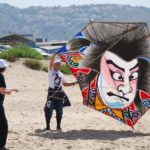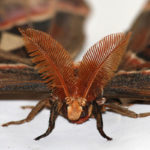Suzhou embroidery
 From ancient times, China is considered the birthplace of silk. It was from China that the Great Silk Road ran across Asia. This subtlest fabric conquered the whole world. And although silk has existed for more than two and a half thousand years, people never came up with the best material. The masterly mastery of Chinese masters is known in many ways.
From ancient times, China is considered the birthplace of silk. It was from China that the Great Silk Road ran across Asia. This subtlest fabric conquered the whole world. And although silk has existed for more than two and a half thousand years, people never came up with the best material. The masterly mastery of Chinese masters is known in many ways.
This is a unique weapon, it is the finest, transparent porcelain in the light, and gunpowder, and bright durable fabrics. But the main thing than undoubtedly China was ahead of the rest is silk.
The history of the birth of silk fabric has been hidden for centuries, somewhere around 2600 BC. Somehow, in an unknown way, in those days, the Chinese managed to use a spider line produced by a silkworm for the production of this fabric.
This was the discovery of the millennium comparable to the appearance of metal and glass in humanity. The discovery of silk for centuries was kept secret by the Chinese from the whole world. Even those Europeans who were in China at that time could not use it, because it was not possible to export butterflies, caterpillars and pupae of silkworms from China.
This was punishable by death. For a very long time, silk was worth its weight in gold because of its lightness and strength. For many centuries, it was delivered to other countries only from China. It was available only to very rich people. But, as they say, all the secret once becomes apparent. The same thing happened with silk. In 552, the Byzantine emperor Justinian purchased silkworm eggs from visiting monks and ordered him to be bred.
After some time, sericulture was common in Asia Minor and North Africa. In Europe, silkworm appeared only in the XIV century. And in Russia, they learned to breed silkworms and unwind cocoons only in the 16th century.
But even despite the fact that the production of silk with time has spread almost all over the world, some types of silk products have remained China’s secret. One such art is embroidery with silk thread on a silk canvas. This craft first appeared in Suzhou and since then it has been called the Suzhou Embroidery. And although the art of embroidery exists in so many countries of the world, there is nothing like Suzhou embroidery anywhere in imre. This rare craft has existed in China for more than two thousand years and its secrets are passed down from generation to generation. The paintings on national themes made by the Suju masters have no analogues in the world.
This craft, which should rather be called art, has its own specific subtleties; the Suzhou embroidery technique is unique in itself. On the basis of translucent silk, with the thinnest needle, unusually bright silk threads reproduce the original plots. Usually these are episodes from the life of birds or animals. There may be amazing flower arrangements or enchanting landscapes. Chinese silk-silk embroidery is one of a kind. The peculiarity of their talent is that somehow, in an unknown way, the knots of threads are hidden so that both sides are front.
However, the real pinnacle of the art of silk embroidery is the embroidery of two different paintings on opposite sides of a silk canvas. This is considered a special skill, available only to individual masters. On such embroideries, the threads from which the image is made, one side is completely hidden by the threads of the image of the other. So for example, on the one hand, an image of a tiger is made, and on the other, cranes. Moreover, all this was done so subtly that considering one side and it cannot be assumed that on the other side.
In the surviving written sources, it is mentioned that the art of Suzhou embroidery arose in the kingdom of W, during the Three Kingdoms, and the first embroideries appeared before the onset of a new era. Silk embroidery reached its maximum perfection in the 17th-19th centuries, during the Qing Dynasty. And in the twentieth century, in embroidery, in addition to purely national motifs, plots of Western civilization began to appear. Moreover, new styles of embroidery appeared that gave this art a new form of development, as a result of which it became popular in many countries.
It sometimes takes up to six months to embroider one fabric. But then each product is a work of art, so unique and inimitable.
Embroideries made on both sides do not hang on the walls, special frames are made for them, which are set so that you can see both sides of this masterpiece. It is surprising that the threads with which embroideries are made do not fade over time and retain brightness for many decades. Such embroideries can decorate any home. Usually they are inherited as heirlooms.



























